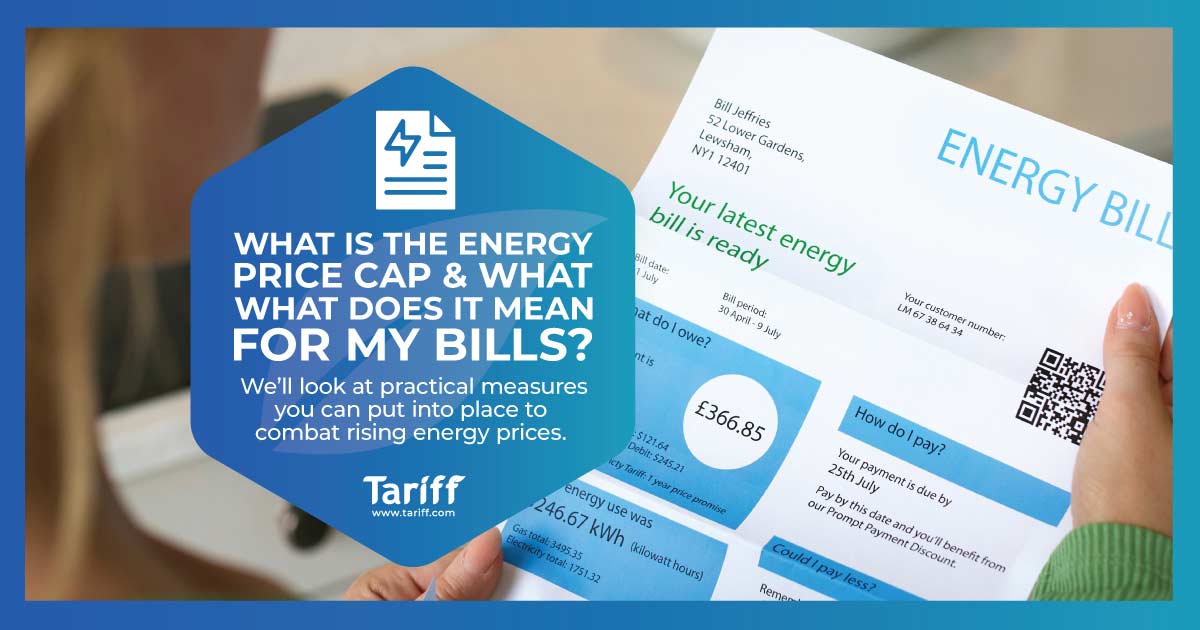What’s My Carbon Footprint When I Stay In A Hotel?
Often the highlight of many people’s years, and a welcome break from the norm, staying in a hotel is a luxury that few can afford to do on a regular basis. Whether that’s all-inclusive decadence at a far-flung resort, or a short seaside stay at a typically British B&B, the UK is a nation with an aspiration for vacations.
However, outside of the usual financial pressures of trying to book a holiday, there’s also the environmental impact that taking that long weekend or much-deserved week in the sun can have. It’s fast become a concern for many, and with the planet in peril, more and more are considering how they holiday.
That’s the purpose of our latest climate report here at Tariff. We’re breaking down the average break to analyse the carbon emissions, including your travel plans, catering, and even accommodation, to truly give you an idea of the environmental impact your holidays could have.
What we’d urge, however, is that you don’t let this deter you from taking that well-deserved break away. While we do all need to make more planet-conscious decisions and sustainable changes, we also need a breather from time to time. While some of the statistics we’re presenting today may be startling, there’s an onus on businesses to make the truly large-scale changes.
4 Steps To Calculating The Carbon Footprint For Your Holiday
Now, you don’t just pack your bags and jet off – the holiday process has quite a few different elements to consider. We’ve opted to break it down chronologically, guiding you through how much carbon you use at every stage of the holidaying journey.
We’ll also be keeping a running total for an example holiday, using the most popular options for each of the key considerations when planning your next getaway.
Step 1 – Booking & Planning Your Trip
One of the most crucial stages in any holiday, planning your itinerary in advance ensures a smooth, stress-free trip. While there’s a few thrill-seekers who’ll opt for a minimal approach to planning, it’s always a good idea to book accommodation and travel far in advance to ensure that you’re not disappointed.
While that’s naturally great advice for guaranteeing a trip to remember, it’s also something to factor into your holiday carbon footprint. This is, admittedly, a small part of it in the grand scheme of things, but it’s also something you’ll need to consider if you’re really seeking to trim down your environmental impact.
Say, for instance, you opt to book your trip through a mobile app or web browser. While you’re unlikely to have your phone on charge while booking and planning, consumer group Which? estimates that it costs just over 0.5 pence per full night of charging, or around £1.74 a year.
That’s approximately 6kWh over the course of a year – almost negligible in comparison to other sources of carbon emissions in the holidaymaking process. You’re also not going to be using your mobile device for that entire year-long period, meaning the actual usage is much, much lower.
Computers will obviously consume more energy, with an estimated average usage of 0.4kWh (running a laptop for 8 hours) or 1.12kWh (running a desktop computer for 8 hours). Again, these figures on usage are comparatively tiny to other elements of your journey, but it’s a good idea to consider them.
Running Total
With an estimated 61% of all online traffic coming from mobile devices, our example holiday will be booked using a mobile app. The figures below are based on one full charge’s worth of usage.
Total Carbon Footprint So Far: 0.01 kgCO2e
Step 2: Travelling For Your Trip
Once you’ve organised your trip and its itinerary, it’s often a waiting game until the time comes to head out on your holiday. No matter where we’re headed, there’s always a sense of eager anticipation when the time rolls around to depart.
Of course, that looks different for all of us. Some of us will be heading off to the airport, fully prepped for a week or two in the sunshine, while others will be hopping in the car or on the train for more of a staycation.
We’ll be breaking down the main methods of travel for holidays – short-haul flights, car trips and train journeys – as well as the expected carbon impact of each of those methods of transportation.
For all journeys, we’ll be basing it on a return. It’s unlikely you’ll be heading out without the intention to come back, so we’ve used that as our basis here.
Plane Travel
Arguably what most people think of when they imagine their next holiday, plane travel is synonymous with sunshine getaways, fond memories and tantalising destinations. It’s long been the vacation of choice for those that can afford it, with British airports seeing an astonishing 300 million passengers over the course of a year.
However, with great popularity naturally comes an increased level of pollution, with figures from Our World In Data estimating that the global aviation industry contributes around 2.5% to the worldwide carbon footprint. While it’s difficult to attribute an accurate proportion of that figure to just the UK, it’s naturally concerning.
Looking closer to home, though, and we find more focused figures for your average overseas voyage.
As you might expect, a short-haul flight (such as sunlit sortie to Barcelona, or a weekend in Prague with pals) is thought to use much less than a longer-haul flight (such as a tourist tour de force in Tokyo, or an odyssey to Australia). That’s simply because less fuel is used, and the plane doesn’t have to travel as far, or expend resources with a layover or refuelling.
However, the carbon cost of a flight is still startling. Take a standard flight from Manchester (the closest airport to our head office) to Barcelona (one of the most popular European destinations) as an example.
We’ll base this on 180 passengers per flight, as the majority of flights between our two example destinations are run on passenger planes like the Boeing 737 or the Airbus A380, both of which hold up to 200 passengers.
The total carbon cost of that flight between Manchester and Barcelona works out at around 485.1 kgCO2e for the flight as a whole, or roughly 2.7 kgCO2e per passenger. A longer haul flight – such as between Manchester and Tokyo – uses substantially more, with 3.396 tonnesCO2e for the whole flight, or 18.9 kgCO2e per passenger.
Car Travel
Those of us who opt to stay closer to home can enjoy the delights that the British countryside and coastlines have squirreled away. Whether that’s in driving up to a seaside hotel that looks out across scenic ocean vistas, or leafy hideaways on the fringes of national parks, there’s much to discover across the Isles.
However, while that natural beauty is something to be savoured, our collective carbon footprint is in danger of putting that in jeopardy. That’s especially true of our holidays, including those we take in the UK.
According to the RAC’s latest figures, UK drivers often travel upwards of 200 miles for their ideal staycation. That’s usually enough to encompass multiple popular destinations, or the sandy reaches of British beaches, and that’s the baseline we’ll use here.
While the destination may be ideal, the environmental cost is less so. The latest calculations from Climate Stewards place the environmental cost of driving a medium-sized petrol car (such as a Ford Focus or a Skoda Octavia) economically at around 73 kgCO2.
Larger cars are less environmentally-friendly, with popular SUVs like Range Rovers, BMWs and Volvos using upwards of 112 kgCO2 for that same 200 mile journey. Smaller cars (think cars like the VW Polo or the Toyota Aygo) will naturally emit less, at around 58 kgCO2.
Train Travel
Often touted as one of the more eco-friendly ways to travel (given its large passenger capacity, and ongoing improvements to the rail network infrastructure), train travel is among one of the most popular options for travelling on holiday.
While there’s naturally limitations with stations and stops along the way, there’s also a major bonus which comes in the form of the energy efficiency of opting for train travel. We’ll use an example trip of Manchester to London as a baseline, as this is roughly the same distance that people will travel in their car.
As you might expect, train comes out to be far more environmentally-friendly alternative to driving, with that same 200 mile journey (use Manchester to London as an example) using a comparatively low 14 kgCO2.
That comes at the price of convenience, however, with many train journeys requiring additional transport at the end destination to reach accommodation. It can often pile on additional costs (both financially, and in terms of the carbon footprint caused by a holiday), and while train travel is undoubtedly a cleaner, greener option, many will still opt to drive.
Running Total
It’s thought that more than half (52%, according to travel association ABTA) of Brits will travel abroad for their holiday, so that’s the example we’ll use here. Data from the ONS shows that Spain is by far and away the most popular destination (15.6 million visitors), so we’ll take that as our example here.
Flight Carbon Footprint: 2.7 kgCO2e
Total Carbon So Far: 2.8 kgCO2e
Step 3: Accommodation For Your Trip
Once we’ve arrived at our destination, there’s often the stressful process of getting checked in Whether we’re staying at a bespoke B&B, or a resort in the tropics, there’s no doubt we’ve got somewhere to unpack, unwind and bed down for the night.
No matter where we stay, there’s an associated carbon footprint with that. Even if we’re staying with relatives, there’s additional pressure placed on electrics, power, heating and even water supplies.
If we’re truly giving a comprehensive overview of how much of a carbon footprint we have on our holidays, we’ll need to look at how much your average hotel consumes, and how that translates to the customer.
We’ve explored the challenges the hospitality sector faces with its utilities in this comprehensive piece, but suffice it to say that the expenses and the energy usage go far beyond your usual home energy bills.
The most recent estimates come from the UK Government’s GHG Conversion Factors (and this calculator from BlociCarbon), and place an average 7-night stay in a hotel in Spain at around 49 kgCO2, with other similar destinations consuming comparatively more. The same stay in Italy, for example, emits around 100 kgCO2.
A stay closer to home is, surprisingly, in between those two figures. 7 nights in a hotel in the UK is thought to expend around 73 kgCO2 (or 81 kgCO2. if it’s in London) – quite a shock when we compare that to the other European destinations we’ve seen above.
Running Total
Continuing our example, we’ll be using a 7 night beach vacation in Spain as our point of reference. As we mentioned earlier, the Spanish coastlines and countryside are Britain’s most popular destination, attracting double the amount of visitors of the next highest (France).
Hotel Carbon Footprint: 49 kgCO2
Total Carbon So Far: 51.8 kgCO2
Step 4: Food & Drinks On Your Trip
Whether we’re choosing to pamper ourselves at a spa resort by the seaside, or we’ve opted for a more active getaway in a bustling city centre, what we eat and drink makes up a huge portion of the overall holidaying experience.
From sushi to steak, and local delicacies to homegrown favourites, we’re always looking to be more adventurous with our plates when we jet off. However, while we often don’t consider the carbon footprint of what’s on our plates, it’s starting to take on much more importance as we hurtle towards that net-zero deadline of 2050.
Recent research from Modern Restaurant Management estimates that a meal out (inclusive of drinks, restaurant facilities and transportation costs) can rack up a carbon bill of upwards of 8 kgCO2. That’s at the very top end, of course, but figures like this are startling to say the least.
Of course, your average holidaymaker won’t be dining out at the finest restaurants each evening, but even more conservative or homemade cuisines have their own carbon costs associated with them.
The BBC’s Good Food website places your average day of meals at home at around 4.48 kgCO2 (or roughly 1.5 kgCO2 per meal) – a far cry from the 8 for a single meal we mentioned earlier.
However, a more conservative estimate – given modern restaurants and the eco-friendly initiatives that are quickly becoming the norm – would be at around 4.8 kgCO2, as this is the average between a home-cooked meal and a more decadent dining out experience.
Running Total
With many of us opting to eat out while we’re sunning ourselves by the sea, it’s a fair assumption that we’d expect to dine out around half of the days we’re away for. We’ve opted for 4 meals out (out of our example 7-night stay), just to give a more concrete overview of the carbon cost of your holiday.
Dining Out Carbon Footprint: 19.2 kgCO2
Total Carbon So Far: 71 kgCO2
How You Can Make Sustainable Holiday Choices
While we’ve done our best to give a comprehensive overview of the carbon footprint you can expect to have when holidaying, everyone’s vacations are likely to be very different. Some of us might choose a staycation over a trip abroad, or opt to splash the cash on a luxury break set against the backdrop of tropical foliage and amber sands.
Ultimately, however you choose to spend your leisure time is at your discretion, but it’s also crucial we all do our part wherever we can to ensure that we’re doing the right thing by the planet.
From the options we presented above, it’s clear that there’s a huge spectrum of carbon usage, from the frugal to the extravagant. If you opted for a long-haul flight to the Maldives, eating out at a restaurant for every meal over the course of 2 weeks, you’d have a massive carbon impact of 2,351.5 kgCO2.
Similarly, if you took as eco-friendly an approach as possible, travelling via train for 3 days away in a local seaside resort (Blackpool, as an example), you’d have a carbon footprint of a much lower 59.4 kgCO2.
The key takeaway from this is that smaller, manageable changes can make all the difference when it comes to the carbon footprint of your holiday. While it’s a step too far to completely change your plans, it’s a good idea to start to make those more minor changes now.




